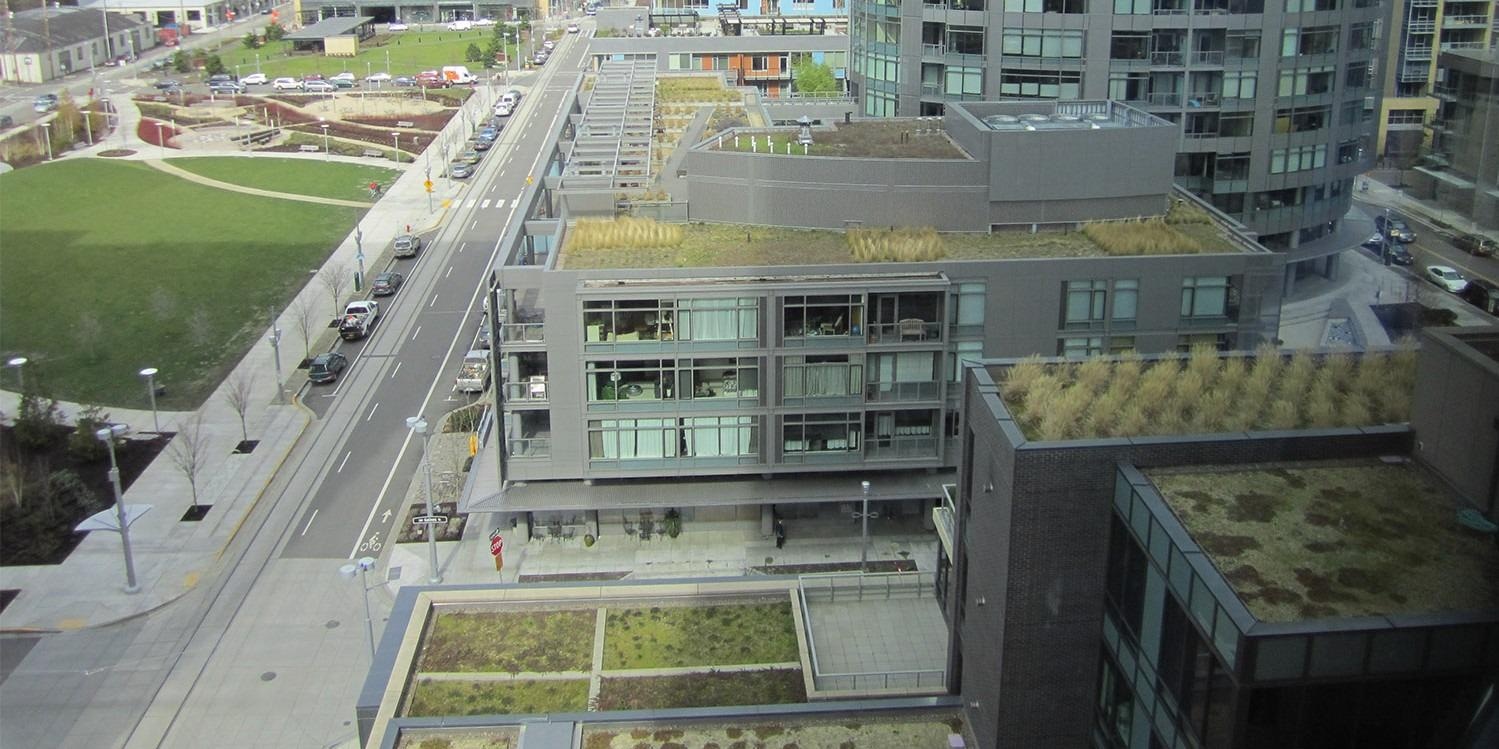May 4 2022Reviewed by Alex Smith
In Portland, Oregon, roofs covered with roofs have become the norm. For stormwater management, the city is considered a leader as it incorporates green infrastructure, free street trees, green roofs and rebates for small residential housing footprints.
 Green rooftops in Portland, Oregon. Image Credit: Noelwah Netusil.
Green rooftops in Portland, Oregon. Image Credit: Noelwah Netusil.
Green roofs, which are also called rooftop gardens or eco-roofs, usually have a soil-grown plant layer over the rooftop, alongside material for structural support, waterproofing and insulation. The advantages of green roofs and the amount that Portland residents are ready to pay to increase the green roofs in the city have been explored in a new study by Reed College in association with the University of Illinois and Portland State University.
Countries around the world are investing significant public resources to reduce the impact of stormwater runoff. Green roofs are part of that solution because they capture some of the rain that would otherwise end up in sewage systems. Knowing the benefits from investing in green roofs is important for implementing sound public policies.
Amy Ando, Study Co-Author and Professor, Agricultural and Consumer Economics, University of Illinois
The research studies how much people would be willing to pay for advantages that include decreased urban heat island effect, reduced sewer overflow events (CSOs), and an increased existence of pollinators, such as butterflies and bees. As in several cities, adverse rainfall events in Portland can rapidly overpower old sewer systems and result in flooding, thereby impacting water quality and eventually affecting properties and transportation.
Although CSO events have declined dramatically in Portland after a major system upgrade ($1.4 billion “Big Pipe Project”), they still happen. Our findings show that survey respondents place the largest value on reducing CSO events further and are willing to support additional funding for this.
Noelwah Netusil, Study Lead Author and Professor, Economics, Reed College
Since 2018, Portland city has needed new properties in the central city with a footprint of more than 20,000 square feet with an eco-roof that covers 100% of the area (with a few exceptions that include evacuation routes and solar panels) to safeguard the city from flooding. Covering 1.4 million square feet, the majority of green roofs are focused in the center of the city.
The respondents of the survey specified how much they will pay for a green roof to lead to a scale of benefits. For instance, it will cost more to reduce sewer overflows three times a year instead of two, lower the air temperature by more than one degree instead of half a degree, and bring in considerably more bees, birds, and butterflies instead of keeping pollinators at the constant level.
Respondents were ready to pay $442.40 for each household in order for green roofs to decrease average temperatures by over 1 °F, reduce sewer overflows by three for a year, and rise pollinators by 150%. That sums to $116.8 million for Portland city.
Residents were ready to pay $202.40 for each household or a sum of $54.4 million for Portland for green roofs to decrease summer temperatures by less than 0.5 °F, decrease sewer overflow by one, and rise pollinators by 50%. The cost will be included in monthly installments to their sewage and stormwater utility bill for one year. Green roofs would also be installed a year after the program was fully funded.
According to the survey, the respondents who had seen or visited a green roof had the highest estimated willingness to fund the program. However, the respondents who were unaware of green roofs before taking the survey were also seen to be supportive of the green roof program. In addition, residents typically preferred eco-roofs to be further spread out equally across the city instead of being concentrated in the city center.
Reducing CSO events had the largest value for all survey respondents—whether they had visited, seen, heard, or knew nothing about green roofs prior to taking the survey. The total estimated benefits from the programs we examined would be sufficient to more than double the number of green roofs on commercial and industrial properties in our study area (Portland).
Noelwah Netusil, Study Lead Author and Professor, Economics, Reed College
Eliana Brown, a specialist in the University of Illinois Extension and Illinois-Indiana Sea Grant water quality, states that the research’s results will be added to a new green stormwater infrastructure website.
Brown says, “When municipalities in Illinois contact us because they’re interested in applying green infrastructure, they want to know how the public will benefit from their investment. This new research on green roofs goes beyond Portland, giving gives stormwater professionals more tools to advocate for practices that are valuable for communities across Illinois and elsewhere.”
The paper is published in Landscape and Urban Planning, and the authors of the study include Noelwah Netusil, Lauren Lavelle, Sahan Dissanayake, and Amy Ando.
The study was financially supported by the Bernard Goldhammer Grant for Research on Economics and Natural Resources, Reed College, and the Stendal Fund for Economics, Reed College. This study is also focused partially on work supported by the USDA-NIFA W4133 Multistate Research Grant 1008843.
Journal Reference:
Netusil, N. R., et al. Valuing the public benefits of green roofs. Landscape and Urban Planning. doi.org/10.1016/j.landurbplan.2022.104426.
Source: https://illinois.edu/